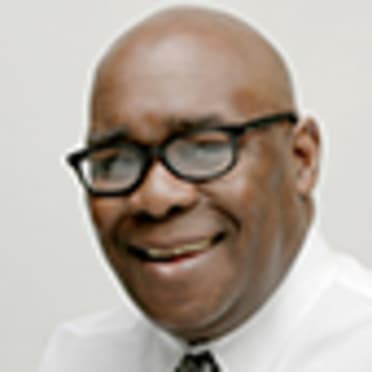The Negro Leagues Baseball Museum is celebrating the 100th anniversary of the start of the Negro Leagues, and MLB.com’s Bill Ladson has written a series of articles on some of the league’s legends. This one is about Hank Thompson, who was the only Negro Leagues player to integrate two Major League teams.
NEW YORK -- Hank Thompson is not a name most people know. He wasn’t the man to break the color barrier in Major League Baseball (Brooklyn's Jackie Robinson did that, of course), nor was he the man to break the barrier in the American League (Cleveland’s Larry Doby).
But Thompson is a man worth knowing, as he is the only player in Negro Leagues history to integrate two Major League teams. He was also the first Black player to play in both the AL and the National League.
Thompson joined the St. Louis Browns on July 17, 1947, three months after Robinson broke the color barrier with the Dodgers. Thompson, a left-handed hitter with power and the ability to play all over the diamond, made history two years later by joining the New York Giants on July 4, 1949, as their first Black player.
“Hank Thompson had star quality all over him,” said Bob Kendrick, president of the Negro League Baseball Museum. “He was an outstanding player in the Negro Leagues.”
Negro Leagues legends: Dan Bankhead | Roy Campanella | Monte Irvin | J.L. Wilkinson
Thompson wasn’t the only Black player on the Browns in 1947, and that led to some history, too. Three days after Thompson was called up, St. Louis brought up infielder Willard Brown, and when both players took the field on July 20, it was the first time two Black players were in the same Major League lineup. A few weeks later, in a doubleheader against the Indians on Aug. 9, Thompson and Doby became the first Black players to oppose each other in a game.
But Thompson didn’t make much of an impact on the Browns, and neither did Brown, as both played sparingly on a team that lost 95 games. In his only season with St. Louis, Thompson played 27 games and hit .256 with five RBIs, stuck behind John Berardino on the depth chart at second base. Berardino later would become an actor, taking the role of Dr. Steve Hardy on “General Hospital,” a run that lasted 33 years.
If Thompson and Brown had been given more of a chance to contribute, the Browns likely would have had to pay more money to the Kansas City Monarchs, who owned the players’ rights, according to Kendrick. That may have been a factor in their limited opportunities. St. Louis released both players before the next season started.
“I really do think the St. Louis Browns thought that Hank Thompson and Willard Brown would do for them like Jackie had done for the Dodgers,” Kendrick said. “Quite frankly, no one really cared about the St. Louis Browns. If you are a St. Louis baseball fan, chances are you were a Cardinals fan.”
Thompson wasn’t unemployed long. He went back to the Monarchs for the 1948 season until the New York Giants signed him to a professional contract the following year. Before he knew it, Thompson was making history again. Three months after the regular season began, Thompson was recalled from Triple-A Jersey City and became the first Black player on the Giants.
Given an opportunity to perform with New York, Thompson delivered. He spent nine years in the Giants organization, hit .267 and averaged 16 home runs and 60 RBIs in 906 games. He played mostly third base but also appeared in the outfield on occasion. In fact, it was as an outfielder that he once again found himself in the history books.
In the 1951 World Series, Thompson joined Willie Mays and Monte Irvin to form the first all-Black outfield in a Major League game after Don Mueller sprained his ankle in the three-game tiebreaker series against the Dodgers.
Thompson returned to third, and three years later, he helped the Giants sweep the Indians in the 1954 World Series. Thompson rose to the occasion, going 4-for-11 (.364 average) with two RBIs, along with playing sparkling defense at the hot corner.
Thompson’s big league career came to an end after the 1956 season, when the Giants demoted him to Triple-A Minneapolis. It was a career that, ultimately, was less than it could have been, as Thompson battled alcoholism for much of his life.
“If not for the sum of his personal demons, he could have had a Hall of Fame-caliber career,” Kendrick said.
Those demons afflicted Thompson in the years after his baseball career was over. He was divorced, then convicted of armed robbery, resulting in a 10-year sentence. He was paroled in 1967 after spending three years in a Texas prison. He died of a seizure on Sept. 30, 1969, 13 years to the day after his final game as a Major Leaguer. He was 43 years old.
